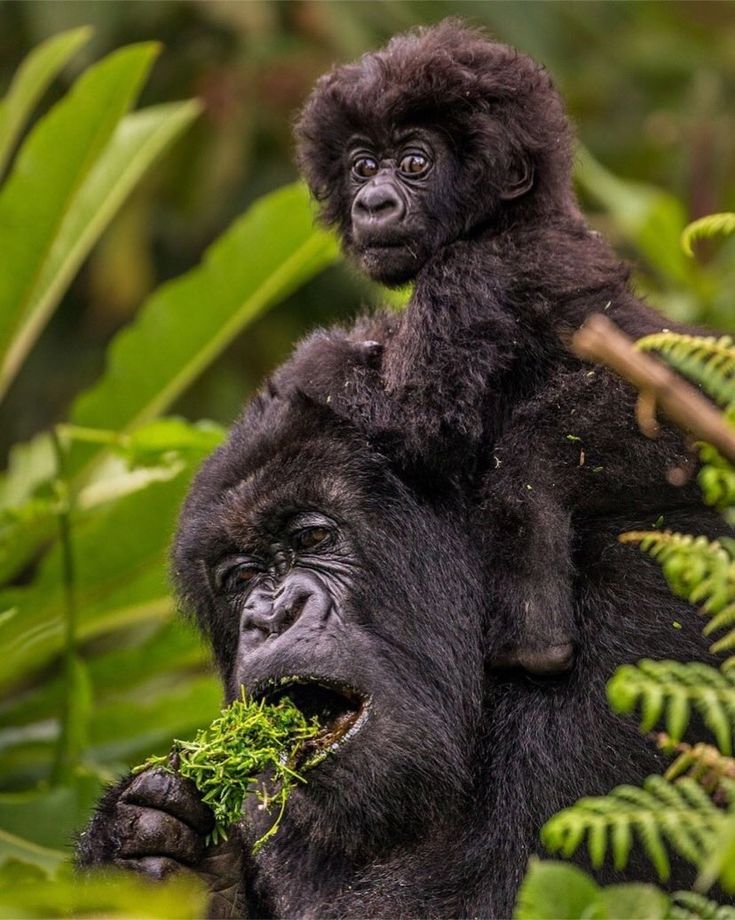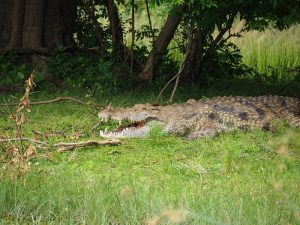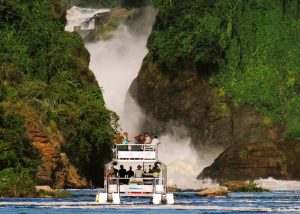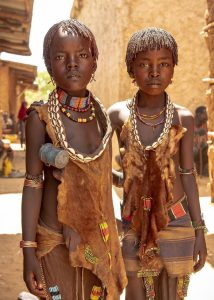Restrictions to Gorilla Trekking in Uganda and Rwanda
Gorilla trekking in Uganda and Rwanda is a once-in-a-lifetime experience that offers adventure seekers an intimate encounter with the endangered mountain gorillas. These incredible creatures, which share about 98% of their DNA with humans, reside in the forests of Uganda and Rwanda, making both countries top destinations for wildlife lovers. However, there are certain restrictions in place to ensure the safety of the gorillas, preserve their habitat, and protect the health of both the animals and the trekkers. In this article, we will explore the essential restrictions and regulations that you must be aware of when planning your gorilla trekking adventure. Restrictions to Gorilla Trekking in Uganda and Rwanda
What Are the Basic Requirements for Gorilla Trekking?
Before you set off on a gorilla trekking adventure, there are a few important requirements and restrictions to keep in mind.
- Age Limit: Who Can Go Trekking? The minimum age for gorilla trekking in Uganda and Rwanda is 15 years old. This restriction ensures that trekkers are physically capable of handling the strenuous hikes and also prevents young children from disturbing the gorillas. In both countries, there is no maximum age limit, but trekkers must be in good health and physically fit to trek in the mountains.
- Health Restrictions: Why Is Your Health Important? Gorillas are susceptible to human diseases, especially respiratory infections like the common cold and flu. Because of this, anyone who is feeling unwell (e.g., has flu-like symptoms or a contagious disease) is not allowed to trek. This restriction is critical to protecting the gorillas’ health and ensuring that diseases are not passed on to them.
- Permits: How Do You Get Access to the Gorilla Trekking Experience? Both Uganda and Rwanda require visitors to obtain a trekking permit in advance. These permits are expensive but are essential for controlling the number of visitors to the gorilla habitat. In Rwanda, the cost of a gorilla trekking permit is currently $1,500 per person, while in Uganda, it is $800 (prices may change over time). Permits are in high demand, so booking early is crucial to securing your spot.
What Are the Gorilla Trekking Group Size Limits?
One of the most important restrictions during gorilla trekking is the limited number of people who can visit a particular gorilla group per day.
- Group Size Limitations: Why Are There Only 8 People Per Group? To minimize disturbance to the gorillas and their natural behavior, only 8 visitors are allowed to visit each gorilla group per day. This restriction ensures that the trekkers’ presence doesn’t overly stress the gorillas or alter their daily routines. The limited group size also allows for a more intimate experience and better photo opportunities.
- Why Are Gorilla Groups Managed? Each gorilla group is managed to ensure the well-being of the animals. The groups are led by a tracker who monitors their movements, and only a limited number of permits are issued to visit a specific group. When trekking, your group will follow the lead of a knowledgeable guide, who will maintain a respectful distance from the gorillas to minimize any impact.
What Are the Rules for Maintaining a Safe Distance from Gorillas?
Safety is paramount for both visitors and the gorillas during trekking.
- The 7-Meter Rule: Why Is This Distance So Important? One of the most critical restrictions during a gorilla trek is the requirement to stay at least 7 meters (21 feet) away from the gorillas. This distance helps protect both trekkers and gorillas from the potential transmission of diseases. While the temptation to get closer for a better photo might be strong, it’s essential to respect the rules for the safety of everyone involved.
- No Touching the Gorillas: Why Is Physical Contact Prohibited? Physical contact with gorillas is strictly prohibited. Gorillas are wild animals, and while they may appear docile, they can be unpredictable if they feel threatened. Additionally, human-to-gorilla contact could transmit diseases, which is why maintaining this distance is not just a suggestion—it is a strict rule.
- What Happens if the Gorillas Approach You? Sometimes, gorillas may approach the trekkers as a sign of curiosity or in an attempt to establish social interaction. If this happens, you must remain calm, avoid sudden movements, and follow the guide’s instructions. If necessary, the guide will ensure a safe distance is maintained for everyone’s safety.
Are There Restrictions on How Long You Can Spend with the Gorillas?
Yes, there are time limits on how long you can spend with the gorillas during your trek.
- One Hour with the Gorillas: Why Is This Time Limit Enforced? The maximum amount of time that visitors are allowed to spend with a gorilla group is one hour. This restriction helps to reduce stress on the gorillas and ensures that their behavior remains as natural as possible. The one-hour time limit also allows the gorillas to return to their daily activities, such as foraging for food and socializing.
- How Is the Hour Managed? The hour begins once you have reached the gorilla group and are in close proximity. Your guide will ensure that you do not exceed this time limit. While it may seem short, this limited period is enough for you to experience the gorillas up close without causing them undue stress.
What Are the Guidelines for Photography During Gorilla Trekking?
Photography is one of the most popular activities during gorilla trekking, but there are important rules to follow.
- Flash Photography Is Not Allowed: Why? Flash photography is strictly prohibited during gorilla trekking. The bright light from a flash can startle the gorillas and cause unnecessary stress, which may lead to aggressive behavior or disturbance of their natural routine. Ensure that you only use natural lighting when taking photos.
- Stay Calm and Quiet: Why Is Silence Important? It’s crucial to be quiet during your encounter with the gorillas. Loud noises can agitate the animals and cause them to retreat into the forest. Remember, the goal is to observe them in their natural habitat without disrupting their behavior.
What Are the Environmental Restrictions for Gorilla Trekking?
Both Uganda and Rwanda are committed to protecting the environment and gorilla habitats, which is why several rules and regulations are in place.
- Leave No Trace: Why Is This Policy Important? Trekkers are expected to respect the natural environment by following a “Leave No Trace” policy. This means you should not leave any litter behind and must carry out all waste, including biodegradable items. This helps preserve the pristine habitats of the gorillas and ensures their environment remains healthy.
- Strict Regulations for Trekking Paths: Why Can’t You Wander Off? To minimize the human footprint on gorilla habitats, trekkers must stick to designated trekking paths. Wandering off the path can damage delicate vegetation and disturb the fragile ecosystem that sustains the gorillas and other wildlife in the area.
What Should You Know About the Weather and Trekking Conditions?
Gorilla trekking takes place in the high-altitude forests of Rwanda and Uganda, so it’s essential to be prepared for the challenging conditions.
- Weather Conditions: How Does the Climate Affect Your Trek? The weather in both countries is unpredictable and can change quickly. Expect heavy rain, especially during the wet seasons (April to May and October to November). The terrain is often muddy and slippery, which makes sturdy footwear and rain gear essential for your trek. Trekkers should be prepared for a physically demanding experience, including uphill climbs and potentially long hours in the forest.
- Physical Fitness: Why Do You Need to Be Fit? The trek can be challenging, with uneven terrain, steep hills, and thick vegetation. While there are shorter treks, most gorilla treks can take between 2 to 6 hours to reach the gorilla group. It’s crucial to be in good physical shape to enjoy the experience and ensure your safety during the hike.
Restrictions to Gorilla Trekking in Uganda and Rwanda. Why Should You Follow These Restrictions?
Gorilla trekking is an unforgettable experience, and following the restrictions is essential for the safety of the gorillas and the sustainability of the trekking experience. By adhering to these regulations, you not only protect the gorillas and their habitat but also ensure that future generations can continue to enjoy the wonder of gorilla trekking in Uganda and Rwanda.
If you’re planning a trip, make sure to book your permits in advance, respect the guidelines, and prepare yourself for the adventure of a lifetime!
By understanding and respecting the restrictions of gorilla trekking in Uganda and Rwanda, you contribute to the protection of these magnificent creatures and their environment. It’s a shared responsibility, and by following these simple yet important rules, you’re helping ensure the survival of mountain gorillas for generations to come.




